Photo
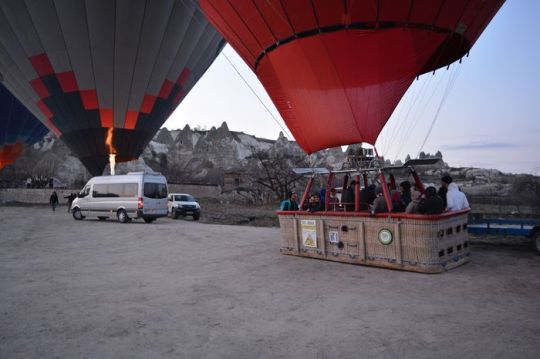
A Troubling Revelation
The words spoken by a prominent revolutionary leader shed light on a disturbing aspect of the Macedonian situation—a new phase marked by the involvement of Serbian and Romanian “bands.” These groups claim to protect their respective villages from conversion to Bulgarian or Hellenic nationality.
Greek Dominance
While Bulgarian “bands” outnumber others, it’s the Greek factions that have been more active in spreading their propaganda. However, the Bulgarians have been cautious, fearing that Western Europe and America would be appalled by Christians waging war on each other. Consequently, they’ve been less proactive than their Greek counterparts.
The Weight of Responsibility
In assessing criminality, the scale tips heavily towards the Greeks. The Turkish authorities, indifferent to Greek activities, tacitly support them. Their motive? To maintain a balance between rival factions, instigate reprisals, and allow mutual violence to persist among the infidels. This reality was evident in the Turkish tolerance of Greek “bands” while persecuting Bulgarian ones Private Tours Balkan.
Divisive Tactics
In mixed Christian villages, where tensions run high between Greek Orthodox and Bulgarian Exarchist factions, the Turks side with the Greeks. They often favor the Greek minority by transferring control of churches, schools, and finances from the Bulgarians to the Greeks. Ironically, many Greeks view this as a just act of restoring Christian property, oblivious to its role in perpetuating discord among Christians.
The Turkish strategy of playing factions against each other has intensified the conflict in Macedonia. Despite the Bulgarians’ restraint, the Greeks’ aggressive tactics, aided by Turkish complicity, have fueled animosity and violence among Christian communities. In this volatile environment, the pursuit of national identity and territorial dominance takes precedence over peace and cooperation.
0 notes
Photo

Frenchman's Fate and Government Response
The Frenchman’s identity was widely recognized throughout the region, making an explanation unnecessary. He was initially detained as a prisoner, then tragically killed, likely due to the assumption that he possessed valuables. His companion, whom he sought, had already met the same fate. Subsequently, the French Consul, upon verifying the circumstances, lodged a complaint, and it’s likely that the French Government has already demanded compensation for the victims’ families. This incident underscores the ruthless nature of the Bashi-Bazouks, a crucial aspect of the Perustitza affair.
Escape Attempts and Pursuit
Many individuals, lacking faith in the benevolence of the Turks but hesitant to seek refuge in the church, fled to the fields. However, they were relentlessly pursued by the Bashi-Bazouks and mercilessly killed wherever they were found. After severing ties with these individuals, the attackers turned to pillaging the deserted homes, setting them ablaze afterward. While they fired upon the church from a distance, they refrained from direct assault when met with armed resistance, indicating their reluctance to engage in combat against prepared adversaries Guided Tours Turkey.
Pillage and Terror
Over the course of several days, from Tuesday to Thursday, the Bashi-Bazouks pillaged and burned the villages, occasionally targeting the church from afar. Meanwhile, the helpless villagers remained confined to the churchyard, witnessing the destruction of their homes with a sense of despair. Despite their desire to resist, they were outnumbered, with only around two hundred armed individuals against a force of a thousand Bashi-Bazouks. An Armenian girl, daughter of one of the churchgoers, provided firsthand accounts of the siege, offering insights into the villagers’ plight and the terror inflicted upon them.
0 notes
Photo
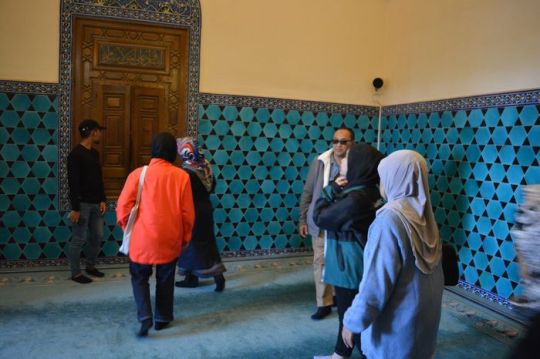
Discovery of the Kasıkcı Diamond
The story of the Kaşıkçı Diamond’s discovery, also known as “the appearance of a most precious diamond,” is a fascinating tale of unexpected fortune. According to historical sources, a circular stone was found in a neglected area in Egrikapi, Istanbul. Unaware of its true worth, the finder exchanged it for a few spoons at a local spoon-seller’s stall. Subsequently, a jeweler purchased the stone for ten gold pieces from the spoon-seller, initially unaware of its value. Upon realizing its authenticity, a dispute arose between the jeweler and his colleague who sought a share of the discovery. Eventually, the matter reached the Chief Jeweler of the Palace, who intervened and purchased the diamond from both parties, rewarding them with purses of gold coins.
Acquisition by the Imperial Treasury
Upon hearing of the remarkable diamond, Grand Vizier Mustafa Pasha expressed interest in acquiring it for himself. However, the Sultan intervened and issued a decree demanding the stone for the Imperial Treasury. After careful examination, the stone was confirmed to be an 84-carat, unparalleled diamond. Consequently, it was acquired for the treasury, symbolizing a significant addition to the imperial wealth. In recognition of his role in securing the diamond, the Chief Jeweler of the Palace was promoted to the prestigious position of ‘Head of the Palace Doorkeepers’ and rewarded with several bags of gold coins Guided Istanbul Tour Whirling Dervishes.
Historical Accounts
Minister of Finance Sari Mehmet Pasha provided further details about the discovery of the Kaşıkçı Diamond in his chronicle “Zübde-i Vekaiyat.” According to his account, the diamond was initially found in the dumps of Egrikapi, Istanbul, and exchanged for spoons by the original finder. As the stone passed through various hands, its true value became evident, leading to disputes among jewelers. Ultimately, the Chief Jeweler of the Palace intervened, ensuring that the diamond was acquired for the treasury while compensating the involved parties with gold coins.
0 notes
Photo

The Plight of Survivors
The current situation of the survivors is dire, with little hope for relief in sight.
Abandoned by Authorities
Turkish authorities have provided scant shelter in the form of wooden sheds on the village outskirts, but the survivors are left to fend for themselves, relying on charity from neighbors for sustenance. Adding insult to injury, these authorities demand regular taxes and war contributions from the victims, displaying callous disregard for their plight.
False Promises
Despite assurances from the Porte in Constantinople, the reality on the ground is grim. Survivors report facing expulsion from their makeshift shelters if they fail to meet these impossible financial demands. The government’s desperate need for funds leaves the survivors in an impossible situation, where the living are forced to pay for the dead Tour Packages Balkan.
Horrific Fate
The sight of skulls and bones scattered on the hill serves as a haunting reminder of the atrocities inflicted upon the villagers, particularly the young girls. Captured and subjected to unspeakable horrors over several days, they were ultimately beheaded in broad daylight, left to rot alongside their massacred kin.
The survivors of the Batak massacre are left to languish in misery, abandoned by the authorities tasked with their protection. As they struggle to survive amidst unimaginable loss and suffering, their plight serves as a stark indictment of the systemic failures and brutal indifference that continue to plague their lives.
0 notes
Photo

Januarius Aloysius MacGahan A Champion of Truth and Freedom
Early Life and Education
Januarius Aloysius MacGahan, hailed as the most brilliant journalist of the 19th century, was born on June 12, 1844, near New Lexington, Ohio, USA. He was of Irish descent and received his early education in America before pursuing further studies in Europe. MacGahan attended Brussels University, where he studied law.
Journalism Career
MacGahan’s illustrious career as a journalist began during the Franco-Prussian War in 1870 when he served as a correspondent for the “New York Herald.” He fearlessly reported from the battlefields, earning acclaim for his insightful coverage. His baptism by fire as a war correspondent set the tone for his future endeavors.
Courageous Reporting
In 1871, MacGahan found himself amidst the chaos of the Paris Commune, where he was the sole newspaper correspondent present. His firsthand accounts of the Commune’s events showcased his bravery and dedication to his craft. Five years later, in Bulgaria, MacGahan was deeply moved by the resilience of the Bulgarian insurgents during the uprising in Panagurishte. Drawing parallels between their struggle and that of the Paris communards, MacGahan’s reporting illuminated the Bulgarian people’s quest for freedom and independence.
Defiance and Masterful Reporting
Despite facing bans and restrictions, MacGahan continued to defy authorities to report on significant events. In 1873, he ventured into Turkestan, reaching the Russian army despite the tsarist government’s prohibition. His dispatches on Russian military operations in Asia, particularly his accounts of the capitulation of Khiva, were hailed as masterpieces of military journalism Sightseeing Turkey.
Advocacy for Justice
Throughout his career, whether reporting from Cuba, Spain, England, France, or even within the Arctic Circle, MacGahan remained steadfast in upholding the highest ideals of his time. When “The Times” of London rejected his progressive articles in 1876, fearing their impact, MacGahan found solace in the “Daily News,” where he continued to champion causes like the Bulgarian people’s struggle for freedom.
Januarius Aloysius MacGahan’s legacy endures as a testament to the power of journalism in advocating for truth and justice. His fearless reporting and unwavering commitment to the defense of human rights continue to inspire journalists worldwide. Through his groundbreaking work, MacGahan left an indelible mark on the annals of journalism, earning him a place among its most revered figures.
0 notes
Photo
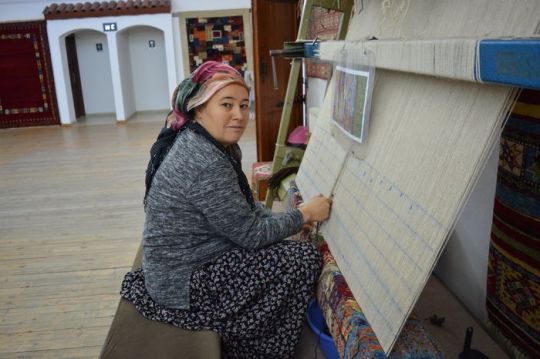
Soviet Interference and Political Developments
General Biryuzov’s Involvement (1945)
General Biryuzov, the Soviet commander, consistently meddled in Bulgarian internal affairs. He insisted on the removal of Dr. G. M. Dimitrov from his role as Secretary General of the Bulgarian Peasant Party. When the request was denied, General Biryuzov ordered the arrest of Dr. Dimitrov. Fifteen years later, in a 1959 article in Rabotnichesko Delo, the Bulgarian Communist Party’s organ, General Biryuzov boasted about his role in Bulgaria’s subjugation and strongly criticized leaders of the Bulgarian Peasant Party, including Dr. G. M. Dimitrov and the late Nicholas Petkov.
Communist Takeover and Lack of Independence (July 1945)
Bulgarian Communist leaders admitted that communism’s establishment in Bulgaria relied on the presence of the Red Army. Under Red Army pressure, the coalition Cabinet formed in September 1944 transformed into a Communist administration by July 1945. This regime was not independent but subservient to the Soviet Union, and it did not represent the free will of the Bulgarian people.
Election Controversy and International Intervention (July-November 1945)
In July 1945, the Soviets announced upcoming elections with only one ticket, the “Fatherland Front” list. Nicholas Petkov, leader of the Peasant Party, requested Allied supervision to ensure free elections following the principles outlined at Yalta. The Bulgarian Communists, without informing Petkov, claimed he had “resigned” as deputy premier. In protest, ministers from the Peasant Party, Social Democrats, and Independent Intellectuals resigned. British and American interventions prompted the Soviets to advise postponing elections and admitting opposition candidates. Petkov was allowed to resume party activities Daily Tours Istanbul.
Broken Agreements and Moscow Conference (November-December 1945)
The Communist-dominated Sofia regime violated agreements by announcing elections on November 18, 1945. Opposition parties boycotted, leading to a single Communist Party-headed candidate list. In December 1945, a Moscow conference of the Three Big Powers addressed Eastern Europe and the Balkans. A compromise solution for Bulgaria was adopted, requiring two opposition party representatives to join the Communist government.
0 notes
Photo
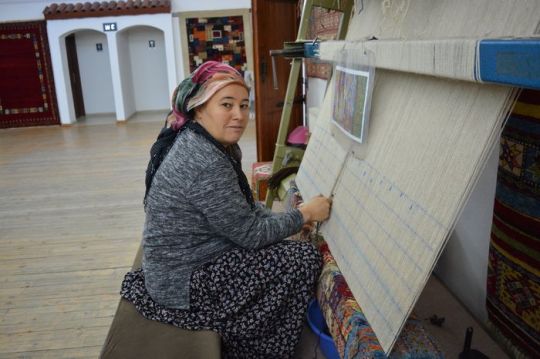
Soviet Interference and Political Developments
General Biryuzov’s Involvement (1945)
General Biryuzov, the Soviet commander, consistently meddled in Bulgarian internal affairs. He insisted on the removal of Dr. G. M. Dimitrov from his role as Secretary General of the Bulgarian Peasant Party. When the request was denied, General Biryuzov ordered the arrest of Dr. Dimitrov. Fifteen years later, in a 1959 article in Rabotnichesko Delo, the Bulgarian Communist Party’s organ, General Biryuzov boasted about his role in Bulgaria’s subjugation and strongly criticized leaders of the Bulgarian Peasant Party, including Dr. G. M. Dimitrov and the late Nicholas Petkov.
Communist Takeover and Lack of Independence (July 1945)
Bulgarian Communist leaders admitted that communism’s establishment in Bulgaria relied on the presence of the Red Army. Under Red Army pressure, the coalition Cabinet formed in September 1944 transformed into a Communist administration by July 1945. This regime was not independent but subservient to the Soviet Union, and it did not represent the free will of the Bulgarian people.
Election Controversy and International Intervention (July-November 1945)
In July 1945, the Soviets announced upcoming elections with only one ticket, the “Fatherland Front” list. Nicholas Petkov, leader of the Peasant Party, requested Allied supervision to ensure free elections following the principles outlined at Yalta. The Bulgarian Communists, without informing Petkov, claimed he had “resigned” as deputy premier. In protest, ministers from the Peasant Party, Social Democrats, and Independent Intellectuals resigned. British and American interventions prompted the Soviets to advise postponing elections and admitting opposition candidates. Petkov was allowed to resume party activities Daily Tours Istanbul.
Broken Agreements and Moscow Conference (November-December 1945)
The Communist-dominated Sofia regime violated agreements by announcing elections on November 18, 1945. Opposition parties boycotted, leading to a single Communist Party-headed candidate list. In December 1945, a Moscow conference of the Three Big Powers addressed Eastern Europe and the Balkans. A compromise solution for Bulgaria was adopted, requiring two opposition party representatives to join the Communist government.
0 notes
Photo
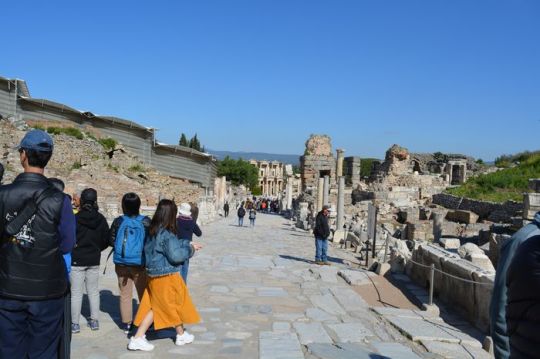
The Coup of September 9 1944
Shifting Allegiances and Negotiations
As World War II unfolded, the legal opposition in Bulgaria pressed for a break with Germany and a shift towards Western states. Negotiations took place in Istanbul, exploring the possibility of aligning with the Allies. By spring 1944, contacts were established with Soviet diplomacy. Simultaneously, the leftist Fatherland Front, organized in 1942, anticipated a significant change as the Soviet army approached Bulgaria. In the summer of 1944, the cabinet of Ivan Bagryanov made a belated attempt to pivot Bulgarian foreign policy towards the United Kingdom and the United States. However, the Soviet army was already on the northern Bulgarian border.
The Soviet Intervention
On September 5, 1944, the Soviet Union declared war on Bulgaria, and Soviet troops crossed the border. With their decisive assistance, the communist-led Fatherland Front orchestrated a military and political action to seize power. On September 6, the Bulgarian government officially declared war on the Reich. In the early hours of September 9, military units, supported by guerrilla fighters, successfully overthrew the Mouraviev government. Prime Minister Kimon Georgiev, appointed by the Fatherland Front, announced the government’s declaration on the radio.
The Aftermath and the End of the Third Bulgarian Kingdom
The authoritarian non-party regime during World War II failed to address significant domestic issues, leading to a crucial turning point for the Third Bulgarian Kingdom. The events of September 9, 1944, marked a profound shift in Bulgaria’s political landscape Turkey Sightseeing.
Reflections on the Era
The closing lines invite future generations to understand the foundational period of this historical shift, emphasizing the unique challenges and experiences of life during those tumultuous years.
The coup of September 9, 1944, brought about a transformative moment in Bulgarian history, reshaping alliances and redirecting the nation’s political trajectory. The events of that day marked the end of an era and set the stage for a new chapter in Bulgaria’s post-war journey.
0 notes
Photo
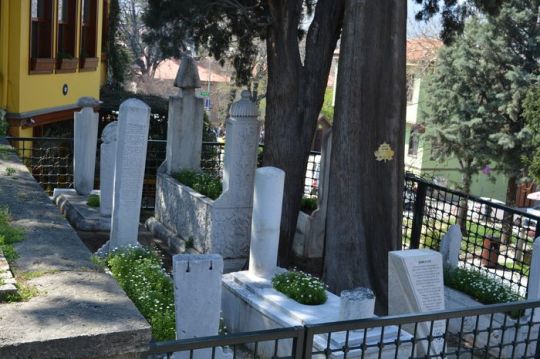
Unraveling the Telegraphed Numbers
Disraeli’s Telegram and the Numbers Game
This article delves into the discrepancies surrounding Mr. Disraeli’s reading of a telegram from Mr. Baring in Parliament. The focus is on the numbers quoted – the villages burnt and the death toll in Bulgaria. The question arises: were these figures a comprehensive overview or a partial representation limited to the Philippopolis district?
A Partial or Complete Account?
The scrutiny begins with an examination of Mr. Baring’s original telegram. While Mr. Disraeli presented it as a broad assessment covering the entirety of Bulgaria, the article raises doubts about whether Mr. Baring intended it as a complete statement or if it was, in fact, a partial snapshot, concentrating solely on the Philippopolis district.
Philippopolis vs. Northern Bulgaria
The article explores the geographical limitations of Mr. Baring’s firsthand observations, emphasizing his visit to the Philippopolis district. It questions the validity of extrapolating these localized findings to the broader context of northern Bulgaria Bulgaria Private Tours. The concern is whether the telegraphed numbers accurately represent the scale of the atrocities across the entire region.
A Critical Assessment
While acknowledging that discrepancies might not be intentional, the article delves into the unintended consequences of presenting partial information as a comprehensive report. It probes whether Mr. Disraeli’s actions, intentional or not, may have contributed to a skewed understanding of the extent of the atrocities in Bulgaria.
Clarifying the Record
The article emphasizes the importance of precision in reporting, especially when dealing with sensitive and distressing events. It calls for a thorough examination of the telegraphed numbers to ascertain whether they were indeed a holistic representation or if there is a need for clarification and correction to present an accurate historical record.
Unraveling the Televised Tale of Tragedy
In conclusion, the article highlights the need for a nuanced understanding of the telegraphed numbers. It underscores the importance of clarifying whether Mr. Baring’s figures were intended to be all-encompassing or region-specific, shedding light on the potential inadvertent misrepresentation that may have influenced historical narratives surrounding the Bulgarian atrocities.
0 notes
Photo

Unraveling the Telegraphed Numbers
Disraeli’s Telegram and the Numbers Game
This article delves into the discrepancies surrounding Mr. Disraeli’s reading of a telegram from Mr. Baring in Parliament. The focus is on the numbers quoted – the villages burnt and the death toll in Bulgaria. The question arises: were these figures a comprehensive overview or a partial representation limited to the Philippopolis district?
A Partial or Complete Account?
The scrutiny begins with an examination of Mr. Baring’s original telegram. While Mr. Disraeli presented it as a broad assessment covering the entirety of Bulgaria, the article raises doubts about whether Mr. Baring intended it as a complete statement or if it was, in fact, a partial snapshot, concentrating solely on the Philippopolis district.
Philippopolis vs. Northern Bulgaria
The article explores the geographical limitations of Mr. Baring’s firsthand observations, emphasizing his visit to the Philippopolis district. It questions the validity of extrapolating these localized findings to the broader context of northern Bulgaria Bulgaria Private Tours. The concern is whether the telegraphed numbers accurately represent the scale of the atrocities across the entire region.
A Critical Assessment
While acknowledging that discrepancies might not be intentional, the article delves into the unintended consequences of presenting partial information as a comprehensive report. It probes whether Mr. Disraeli’s actions, intentional or not, may have contributed to a skewed understanding of the extent of the atrocities in Bulgaria.
Clarifying the Record
The article emphasizes the importance of precision in reporting, especially when dealing with sensitive and distressing events. It calls for a thorough examination of the telegraphed numbers to ascertain whether they were indeed a holistic representation or if there is a need for clarification and correction to present an accurate historical record.
Unraveling the Televised Tale of Tragedy
In conclusion, the article highlights the need for a nuanced understanding of the telegraphed numbers. It underscores the importance of clarifying whether Mr. Baring’s figures were intended to be all-encompassing or region-specific, shedding light on the potential inadvertent misrepresentation that may have influenced historical narratives surrounding the Bulgarian atrocities.
0 notes
Photo

Unraveling the Telegraphed Numbers
Disraeli’s Telegram and the Numbers Game
This article delves into the discrepancies surrounding Mr. Disraeli’s reading of a telegram from Mr. Baring in Parliament. The focus is on the numbers quoted – the villages burnt and the death toll in Bulgaria. The question arises: were these figures a comprehensive overview or a partial representation limited to the Philippopolis district?
A Partial or Complete Account?
The scrutiny begins with an examination of Mr. Baring’s original telegram. While Mr. Disraeli presented it as a broad assessment covering the entirety of Bulgaria, the article raises doubts about whether Mr. Baring intended it as a complete statement or if it was, in fact, a partial snapshot, concentrating solely on the Philippopolis district.
Philippopolis vs. Northern Bulgaria
The article explores the geographical limitations of Mr. Baring’s firsthand observations, emphasizing his visit to the Philippopolis district. It questions the validity of extrapolating these localized findings to the broader context of northern Bulgaria Bulgaria Private Tours. The concern is whether the telegraphed numbers accurately represent the scale of the atrocities across the entire region.
A Critical Assessment
While acknowledging that discrepancies might not be intentional, the article delves into the unintended consequences of presenting partial information as a comprehensive report. It probes whether Mr. Disraeli’s actions, intentional or not, may have contributed to a skewed understanding of the extent of the atrocities in Bulgaria.
Clarifying the Record
The article emphasizes the importance of precision in reporting, especially when dealing with sensitive and distressing events. It calls for a thorough examination of the telegraphed numbers to ascertain whether they were indeed a holistic representation or if there is a need for clarification and correction to present an accurate historical record.
Unraveling the Televised Tale of Tragedy
In conclusion, the article highlights the need for a nuanced understanding of the telegraphed numbers. It underscores the importance of clarifying whether Mr. Baring’s figures were intended to be all-encompassing or region-specific, shedding light on the potential inadvertent misrepresentation that may have influenced historical narratives surrounding the Bulgarian atrocities.
0 notes
Photo
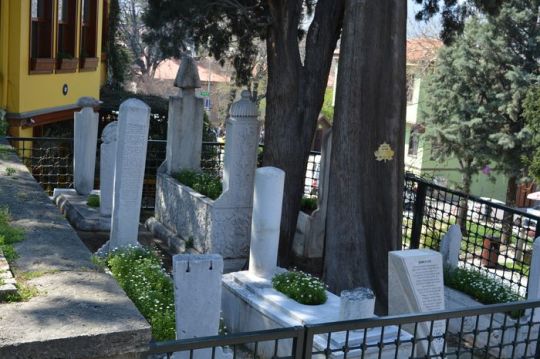
Unraveling the Telegraphed Numbers
Disraeli’s Telegram and the Numbers Game
This article delves into the discrepancies surrounding Mr. Disraeli’s reading of a telegram from Mr. Baring in Parliament. The focus is on the numbers quoted – the villages burnt and the death toll in Bulgaria. The question arises: were these figures a comprehensive overview or a partial representation limited to the Philippopolis district?
A Partial or Complete Account?
The scrutiny begins with an examination of Mr. Baring��s original telegram. While Mr. Disraeli presented it as a broad assessment covering the entirety of Bulgaria, the article raises doubts about whether Mr. Baring intended it as a complete statement or if it was, in fact, a partial snapshot, concentrating solely on the Philippopolis district.
Philippopolis vs. Northern Bulgaria
The article explores the geographical limitations of Mr. Baring’s firsthand observations, emphasizing his visit to the Philippopolis district. It questions the validity of extrapolating these localized findings to the broader context of northern Bulgaria Bulgaria Private Tours. The concern is whether the telegraphed numbers accurately represent the scale of the atrocities across the entire region.
A Critical Assessment
While acknowledging that discrepancies might not be intentional, the article delves into the unintended consequences of presenting partial information as a comprehensive report. It probes whether Mr. Disraeli’s actions, intentional or not, may have contributed to a skewed understanding of the extent of the atrocities in Bulgaria.
Clarifying the Record
The article emphasizes the importance of precision in reporting, especially when dealing with sensitive and distressing events. It calls for a thorough examination of the telegraphed numbers to ascertain whether they were indeed a holistic representation or if there is a need for clarification and correction to present an accurate historical record.
Unraveling the Televised Tale of Tragedy
In conclusion, the article highlights the need for a nuanced understanding of the telegraphed numbers. It underscores the importance of clarifying whether Mr. Baring’s figures were intended to be all-encompassing or region-specific, shedding light on the potential inadvertent misrepresentation that may have influenced historical narratives surrounding the Bulgarian atrocities.
0 notes
Photo
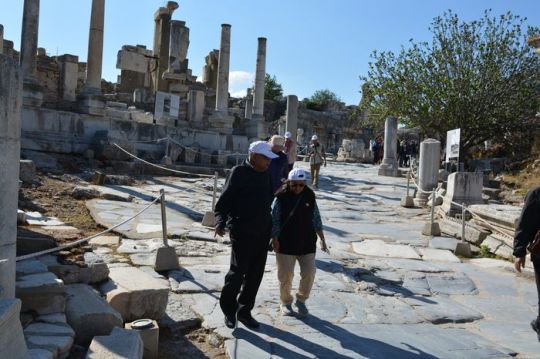
Unraveling Perustitza's Aftermath
Shadows of a Surrendered Village
The aftermath of Perustitza’s surrender unfolds as a complex tapestry, weaving together conflicting narratives, political maneuvering, and the elusive quest for accurate casualty figures. This pivotal period, marked by surrender and shifting alliances, offers a glimpse into the challenges of documenting the true toll of conflict on a community.
The Paradox of Surrender Perversity Beyond Calculation
The decision to surrender, an act often associated with the hope for safety and mercy, took an unexpected turn in Perustitza. Contrary to the grim expectations that typically accompany such capitulations, the Armenian girl’s account paints a different picture. She asserts that none of the women who surrendered faced maltreatment or violation. This surprising twist challenges preconceived notions about the aftermath of surrender in conflict zones.
The absence of reported atrocities against the surrendered women raises intriguing questions about the motivations and intentions of the occupying forces. This apparent restraint could be a strategic move or indicative of internal divisions within the Turkish leadership. The subsequent recall of Aziz Pacha, deemed too friendly to the Bulgarians, further muddies the waters, hinting at political machinations that went beyond the immediate circumstances in Perustitza.
Calculating Losses The Challenge of Estimating Casualties
The fog of war shrouds the true extent of the tragedy in Perustitza as the challenge of estimating casualties becomes apparent Holidays Bulgaria. The absence of reliable census statistics complicates efforts to ascertain the exact toll on the village. Villages, wary of tax implications, often understate population figures, making it nearly impossible to rely on pre-massacre records.
The village’s official returns indicated three hundred and fifty houses, a figure that, even at a conservative estimate of six inhabitants per house, would suggest a population exceeding two thousand. However, the discrepancy between official records and the villagers’ estimates reveals the uncertainty surrounding the true numbers. The inhabitants’ rough estimate places those remaining at one thousand, implying a devastating loss of life ranging between one thousand and fifteen hundred.
Mr. Baring and Mr. Schuyler align with this estimate, placing the toll at a thousand. Yet, the difficulty of obtaining precise figures highlights the chaos and confusion that often accompany such tragic events. The very nature of war, with its fluid dynamics and the propensity for misinformation, adds layers of complexity to the quest for an accurate account of the casualties in Perustitza.
In the aftermath of Perustitza’s surrender, the village stands as a poignant symbol of the challenges inherent in documenting the human cost of conflict. The elusive nature of casualty figures underscores the need for careful examination and nuanced interpretation, recognizing the multifaceted realities that emerge when perversity, political intrigue, and the toll of war converge on the battlegrounds of history.
0 notes
Photo

Turkish authorities
I am convinced that not the slightest reliance can be placed in the promises of the Turkish authorities, and that they have no intention of fulfilling their promises when they make them. They are simply made to throw dust in the eyes of Europe, for although they have not patriotism enough to know or care whether they themselves ruin the country or not, they have a very lively fear of a European intervention, and are ready to promise anything to avert it. As for the execution of these
promises they know that can be avoided. As though in very contempt for the promises and assurances given to Mr. Baring and Mr. Schuyler, they are everywhere sending out at this moment, and demanding the payment of taxes in the burnt and ruined villages, just as though nothing had happened Daily Tours Istanbul.
On this village of Raddovp, for instance, a tax of four hundred pounds lias been levied, which it is utterly impossible for the poor people to pay. The pretext for the burning of this village was the killing of two zaptiehs, or rural policemen, here. The inhabitants flatly deny that any zaptieh was killed in or about the village, or that they ever raised a hand against the Turks.
Turks have been killed
As in other villages where Turks have been killed, the people always confess it, I believe that here they tell the truth, and that there was no other cause for the attack than the desire for plunder on the part of the Turks. This is also, I believe, Mr. Schuyler’s opinion. We walked through the village, which presented a sad spectacle of ruin.
Many of the people seemed to have returned, each family, to the blackened walls of their former homes, where they had constructed in the corner of the walls a sort of shelter with the aid of a few poles and a little straw. Some had a coverlet or two, others straw to sleep on, and many seemed to sleep on the bare ground. I saw one sick woman groaning with pain, lying with only a thin coverlet between her and the damp ground, while a little girl sat beside her and continually bathed her head with cold water.
0 notes
Photo
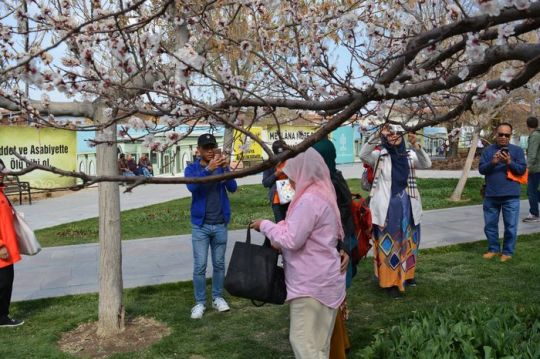
Pomaks or Mohammedan Bulgarians
Shortly afterwards seven more Turks, who approached the village, were ordered to surrender, and did so at once. These were two zaptiehs, two tax-collectors, one clerk, and two pomaks or Mohammedan Bulgarians. They were all lodged in a Bulgarian house and well treated, except one of the zaptiehs or mounted police of the country, who had committed such acts of cruelty and barbarity that they decided he had merited death, and therefore sentenced and shot him.
A day or two later some people in a closed carriage, approaching along the road towards the fortifications, were hailed and likewise ordered to surrender, and upon their attempting to escape were fired upon. The carriage was captured, and it was found there were two men and three women in it. The two men and one of the women had been killed by the fire ; one of the remaining women seized a sabre and struck at one of the insurgents, whereupon she was killed. The other woman was captured and sent into the village Sightseeing Turkey, and well treated until the arrival of the Turks, when she was set at liberty.
As far as wre have been able to learn up to the present, those two women are the only ones that have been killed by the insurgents, and one of them, as I have just related, was shot accidentally. The Turkish authorities in Philippopolis state that there were twelve killed in all; but they have been unable to give Mr. Schuyler either the names of these women, or the names of the villages in which they were said to have been killed, and he therefore will not accept the statement until he finds further proof.
Kiani Pacha, who was sent here to inquire into the atrocities committed by the Baslii-Bazouks, told Mr. Schuyler, with the coolest assurance, that the wife and daughter of the Mudir of Avrat-alan had been killed. Mr. Schuyler found, upon investigation, that the wife of the Mudir had not been killed, and that he never had a daughter. It was said that the wife of the Mudir here in Otluk-kui had likewise been killed.
0 notes
Photo

Known as The Golden Age
The period of his rule is known as “The Golden Age” not only because he had expanded the territory of the First Bulgarian Kingdom between three seas – the Black Sea, the Aegean Sea and the Adriatic Sea. Simeon the Great left a bright trace in Bulgarian diplomacy, united the Slavic tribes and developed the schools in Ohrid and Preslav which his father had founded. During his rule were created masterpieces of literature like the Alphabetical Prayer and Preface to the Gospel by Constantine of Preslav, Six Days by Joan Exarch and A Tale of the Letters – the latter is considered by some researchers as a work of the King himself under the pen-name Chernorizets Hrabar. The 9th and 10th centuries were also an epoque of vigorous blossoming of arts and crafts, architecture and sculpture.
Decline
However, Simeon the Great left also a dark trace in Bulgarian history. The society was exhausted of all those wars he waged and the problems of social inequality had sharpened. In the second half of the 10th century appeared a new danger: the Varangians under Oleg seized from the Hazars Kiev Visit Bulgaria – the old Slavic settlement on trade route between Scandinavia and Constantinople – to settle there in 882 the capital of a state named Kievan Russia and soon their horsemen were on the north banks of the Danube…
The son of Simeon the Great, Petar, ruled from 927 to 969 following a peaceful foreign policy. He married his granddaughter to the Byzantine Emperor and signed a 40-years peace treaty. But there was already an unstable atmosphere in the state which helped the Serbs to restore their independent principality and split off from the Bulgarian kingdom. Peter also suffered a series of defeats from the Prince of Kiev, Svetoslav – an ally of the Emperor Nicephorus II Phocas – after which he fell sick and retired to a monastery. His son, Boris II (969-971), ascended the throne. When Svetoslav undertook his serial march in Bulgaria the King concluded a peace treaty with him and in 970 the united army of Bulgarians and Russians attacked Byzantium. This time, however, the Byzantines won and Boris II was taken to Constantinople as a prisoner of war.
0 notes
Photo
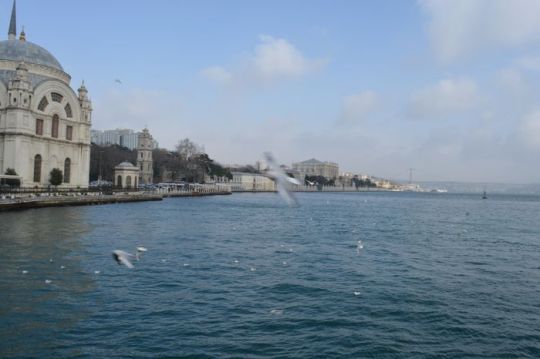
Thousand and One Columns
Cisterns and Reservoirs.—These were formerly nineteen in number, but ruins of only a few including two of the most important cisterns, the Philoxenus and the Basilica, now remain.
The Philoxenus Cistern, or The Cistern of the Thousand and One Columns (in Turkish Bin Bir JDlreck) is situated in the street opposite the tomb of SultanMahmud II. Admission 1 piastre (2d.) per head.
This cistern, one of the finest in Constantinople, dates from the time of Constantine the Great, and derives its name, according to Codinus, from the Senator Philoxenus who came to Constantinople from Borne with the Emperor; or, more probably, from the fact that it was intended for the inhabitants and strangers who lived in the vicinity, unlike the Basilica cistern, which was only for the supply of the Palace. It is 190 feet long and 166 feet wide, and its roof is supported by 212 pillars, composed of three tiers of columns, making altogether 636, and not 1001 as implied by its name. These are placed one above the other, are joined by arches, and are arranged in 15 rows. Only the upper of the three tiers is to be seen in its entirety. It is 14 feet 4 inches high. Only part of the middle tier is visible; the remainder of this and the whole of the lower tier being buried in the mud which has for centuries accumulated in this cistern. Some of the capitals, which are devoid of any sculpture, bear the letter G and other Byzantine initials and monograms and crosses which have lately been obliterated with whitewash. The cistern is now quite dry, and has long been used by Armenians who follow the occupation of silk-spinners. ‘
Bcutan Sarai
The Basilica Cistern, called Yen Bcutan Sarai (Underground Palace) by the Turks, is to the left of St. Sophia, in the court of a Turkish private house (admission 5 piastres per head). It was discovered at the beginning of the eleventh 9 century by Gyllius, having till then remained unknown owing to the houses built over it. The finder narrates how he was let down through a hole he had accidentally found in the ground, and crossed the cistern in a boat which he found there and which was used by the owner of the house above. This cistern still contains water, used by the people living in the houses above it. It is supposed to extend under St. Sophia and to communicate with the sea, but in reality reaches no farther than 80 feet to the north of St. Sophia, and is above sea- level. It was built by Constantine the Great, and enlarged by Justinian. Over it were the Institutes, Library, and part of the University founded by Constantine. It is 336 feet by 182 feet, and its vaulted roof rests on 336 pillars, 40 feet high and 12 feet apart, arranged in 12 rows.
0 notes